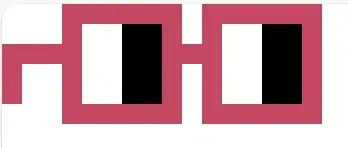On April 24, it was discovered that the image data of CloneX, a project under the once top-tier blue-chip NFT studio RTFKT, could not be displayed on major trading platforms. Instead, a message appeared stating, "This content has been restricted; using Cloudflare's basic services in this manner violates the terms of service." This incident sparked heated discussions within the community.
Just a day later, on April 25, its parent company Nike was sued. RTFKT NFT buyers, led by Australian resident Jagdeep Cheema, filed a proposed class action in the federal court in Brooklyn, New York, claiming that they suffered significant losses after Nike abruptly shut down these operations. How did the strongest NFT trend IP project, once acquired by Nike, fall to such a state?

Although quite complex, and uploading SVG images like those of Azuki or CloneX is relatively unrealistic, this does not diminish the allure of "on-chain" NFTs. They often transcend the NFTs themselves, representing a certain culture or community power. For instance, Nouns DAO is dedicated to building identity, community, governance, and a treasury for community use, and Nouns remains active in many projects within the Base ecosystem.

Dom Hofmann, the founder of Loot and a co-founder of Vine, created a text-based adventure game also called Loot as a side project. During its development, he wrote a random item generator, a software that could return various names for weapons, armor, and accessories, leading to the birth of Loot.
In the Loot project, images are directly embedded in the smart contract in SVG format, returned through tokenURI, and can dynamically change based on on-chain data, achieving the characteristics of being fully on-chain and dynamically generated.
Its presentation mode may be very simple, consisting only of text and basic graphics, but the meaning behind it is much deeper. Dom was once asked how much contribution would be made voluntarily to build a world. He replied, "Ultimately, these are just items on a list. It's just how people perceive it and how they assign value to it. And value doesn't necessarily have to be a dollar amount; it can be many things." As he said, the concept of Loot has influenced NFTs and Crypto Games, and the currently active Treasure DAO behind Smol was born from this concept.
Positive for Ordinals?
During the RTFKT incident, the most common sentiment in the community was that this event is beneficial for Ordinals. Ordinals are considered different from most Ethereum NFTs as they are fully on-chain.
The Ordinals protocol on Bitcoin writes images, text, and other data directly into transactions through the Taproot script path, "inscribing" data into "Satoshi" and numbering each Satoshi unit, giving each one a unique identity. This method allows Ordinals' data to be fully stored on the Bitcoin blockchain, but it also brings high storage costs and limitations on data size.
Due to the high storage costs and limited data storage, the BTC NFT ecosystem is uniquely distinctive. Compared to Ethereum's functional or DAO organizational models, the "survivors" in BTCNFT rely on a deeper "cultural" heritage. Whether it's the Taproot Wizard, which was issued at an extremely high price of 0.2 BTC and carries the legacy of the Bitcoin community advertisement from 2013, "Magic Internet Money Wizard," or NodeMonkes as the first original 10K Bitcoin NFT.
Further reading: "An Analysis of Bitcoin memeNFT, What Does the Bald Wizard Taproot Wizard Pay Tribute to and Express?"

In this era, there are hardly any project teams still committed to making NFTs, and no one knows what form NFTs will take in the next era. Will they be "securities"? Proof of ownership? Or independent AI agents? Unlike Memecoins, which only require contracts to be available for trading communities to "develop freely," for non-fungible currencies, whether it is merely an image IP or a functional "receipt," the ownership of metadata is incredibly important. This incident serves as a wake-up call for both project teams and participants alike.
免责声明:本文章仅代表作者个人观点,不代表本平台的立场和观点。本文章仅供信息分享,不构成对任何人的任何投资建议。用户与作者之间的任何争议,与本平台无关。如网页中刊载的文章或图片涉及侵权,请提供相关的权利证明和身份证明发送邮件到support@aicoin.com,本平台相关工作人员将会进行核查。




